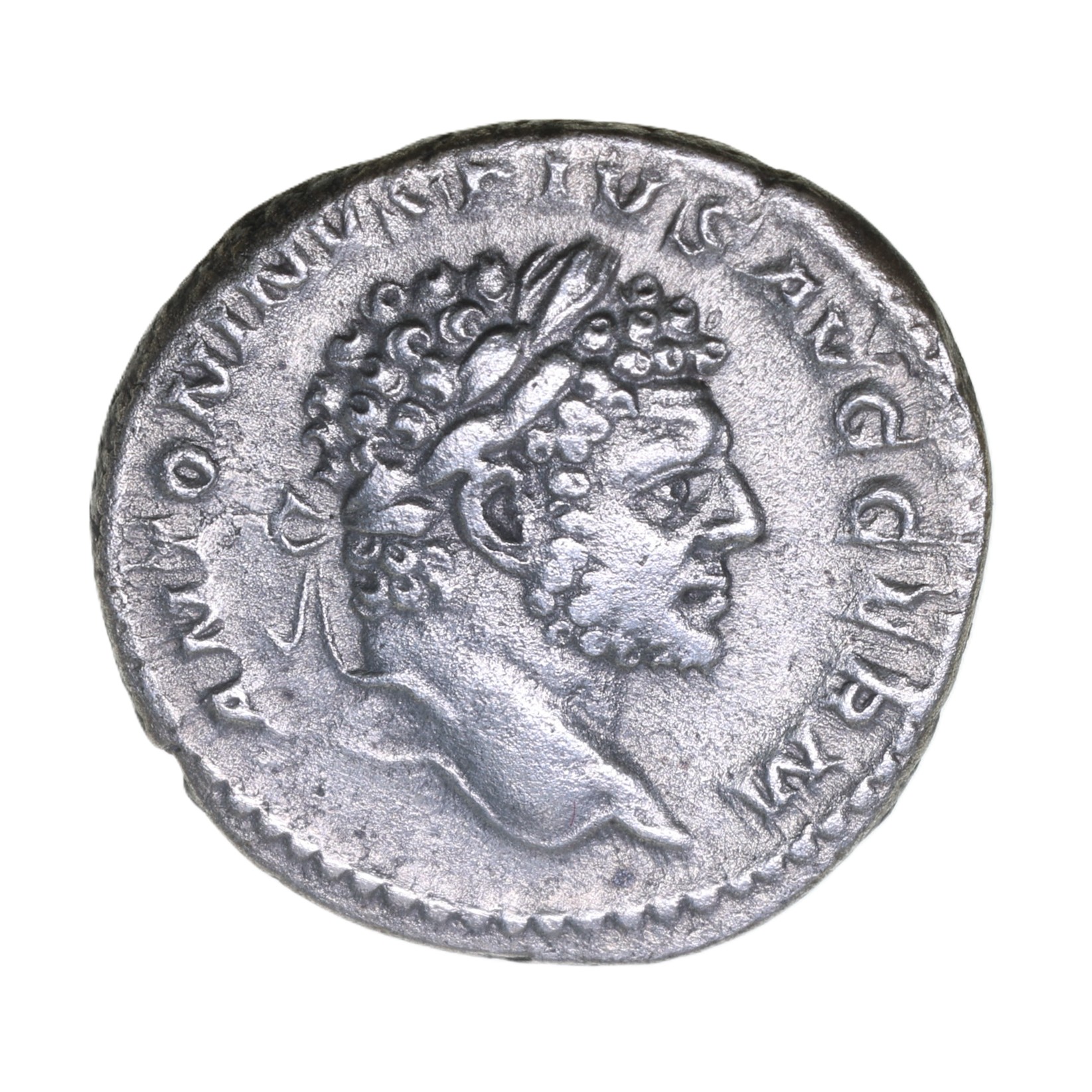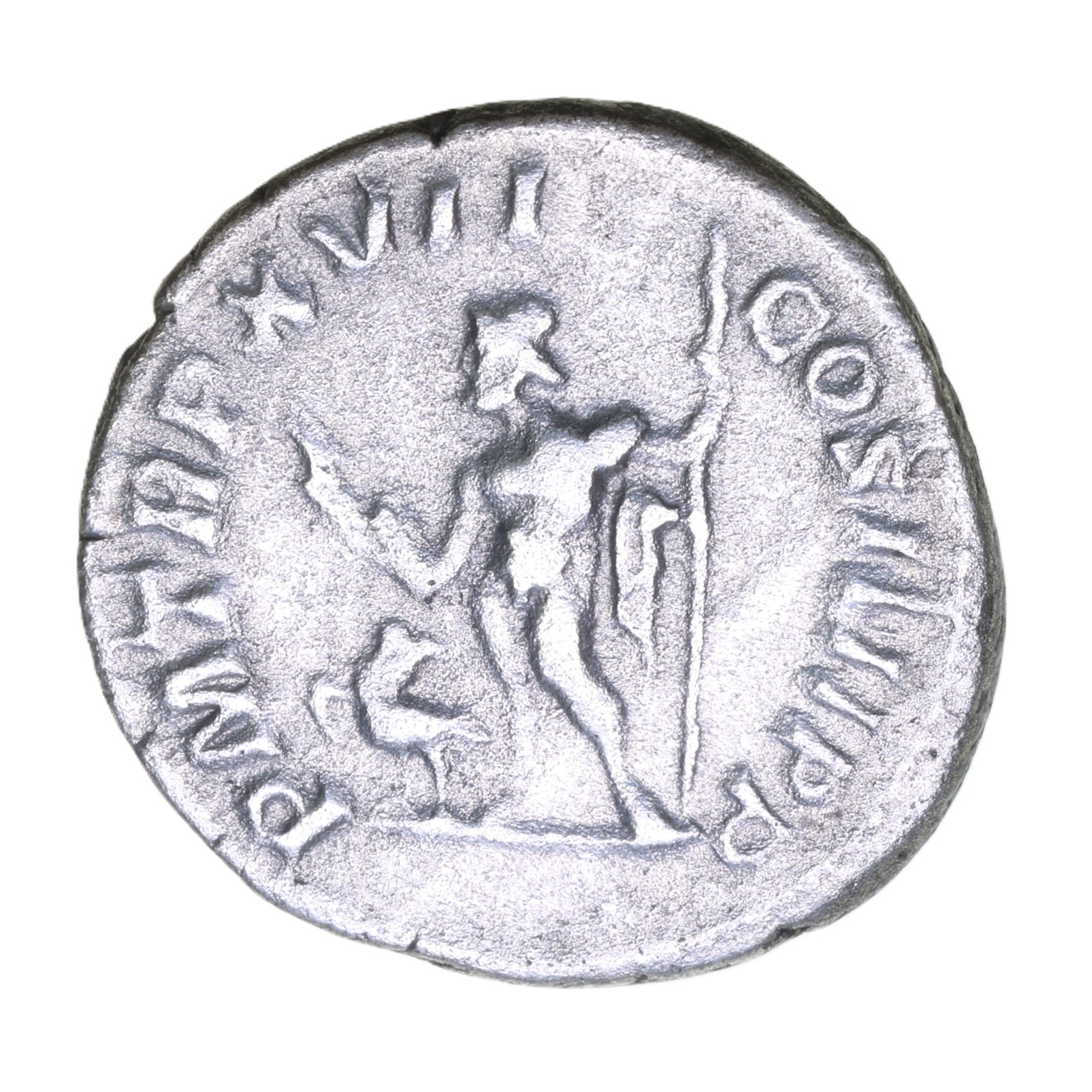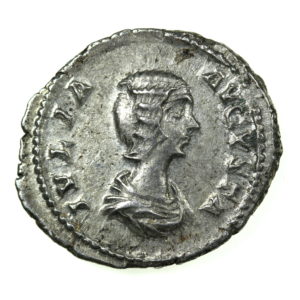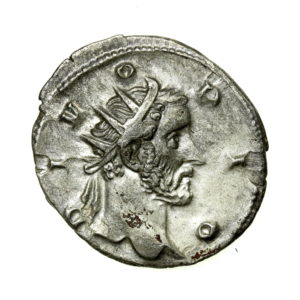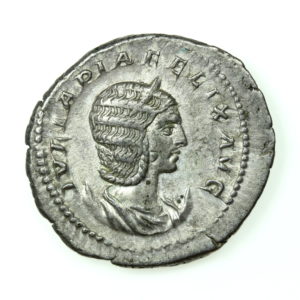Caracalla AD 198-217 Silver Denarius
£99.00
Caracalla AD 198-217 Silver Denarius
Laureate bust right/ Jupiter standing holding thunderbolt
Rome
RCV6836; 18mm, 3.20g
Caracalla was the eldest son of Septimius Severus. His name was a nick name taken from the long Gallic cloak which he made fashionable in Rome. His actual name was Julius Bassianus although he changed this to Marcus Aurelius Antoninus when he became Caesar in AD 195. Later in AD 198 he was elevated to Augustus along with his father Septimius Severus.
Caracalla accompanied his family to Britain in AD 208 where he led the last Caledonian campaign in person. When his father died in York in AD 211 his younger brother Geta was created co emperor. Unfortunately the brothers disliked each other intensely and shortly after they returned to Rome Geta was assassinated.
Caracalla took great care to gain the goodwill of the army by increasing the pay and rations of his soldiers. There were also changes in the High Command and any supporters of Geta were removed. Carcalla also took care to ensure that none of his governors controlled sufficient forces to instigate a rebellion. In AD 213 Caracalla campaigned in Germany where he claimed to have defeated the Alamanni although his critics claimed that he brought them off.
Caracalla had a taste for non Roman fashion and this resulted in a breakdown of Roman exclusiveness. This was symbolised by one of the most famous legal measures the Constitutio Antoniniana whereby virtually all peoples within the empire, excepting slaves, became Roman citizens. This had the benefit of greatly expanding the tax base which until then had fallen almost exclusively on Roman citizens. Finances became increasingly tight Caracalla reign saw the introduction of a new coin, the antoninianus. By introducing the antoninianus Caracalla was in fact debasing the currency as although the antoninianus was valued at 2 denarius it was only the weight in silver of 11/2 denarii.
Caracalla oversaw the opening of new Baths at Rome soon to be known as the Baths of Caracalla. These provided not just baths but also gardens, open air gymnasiums and art collections which were open to the general population and designed to accommodate thousands of people at any one time.
Caracalla great aim was to conquer the Parthians and a great army was assembled and went east in AD 216. After invading Media one of his praetorian prefects took fright and when Carcalla dismounted to relieve himself he was assassinated.
1 in stock

